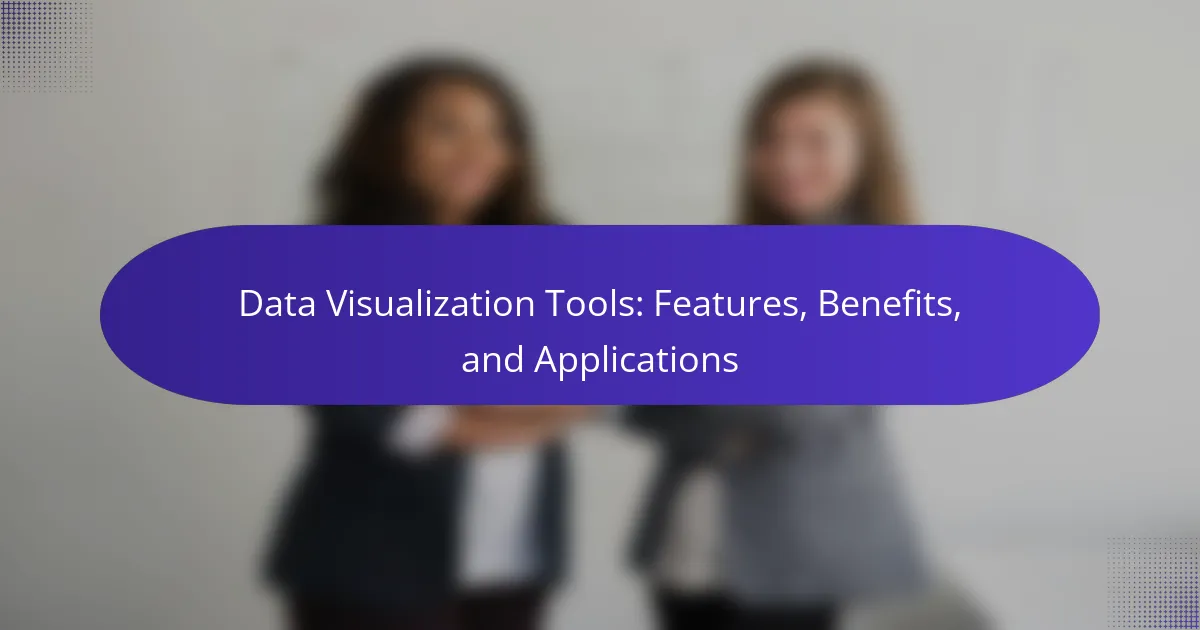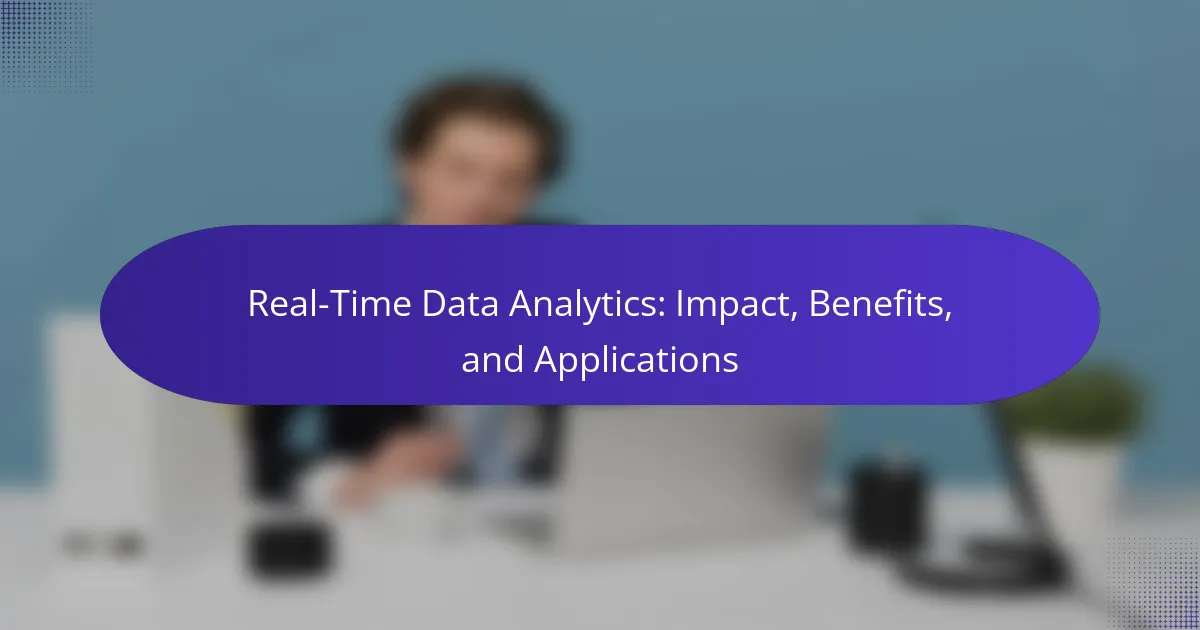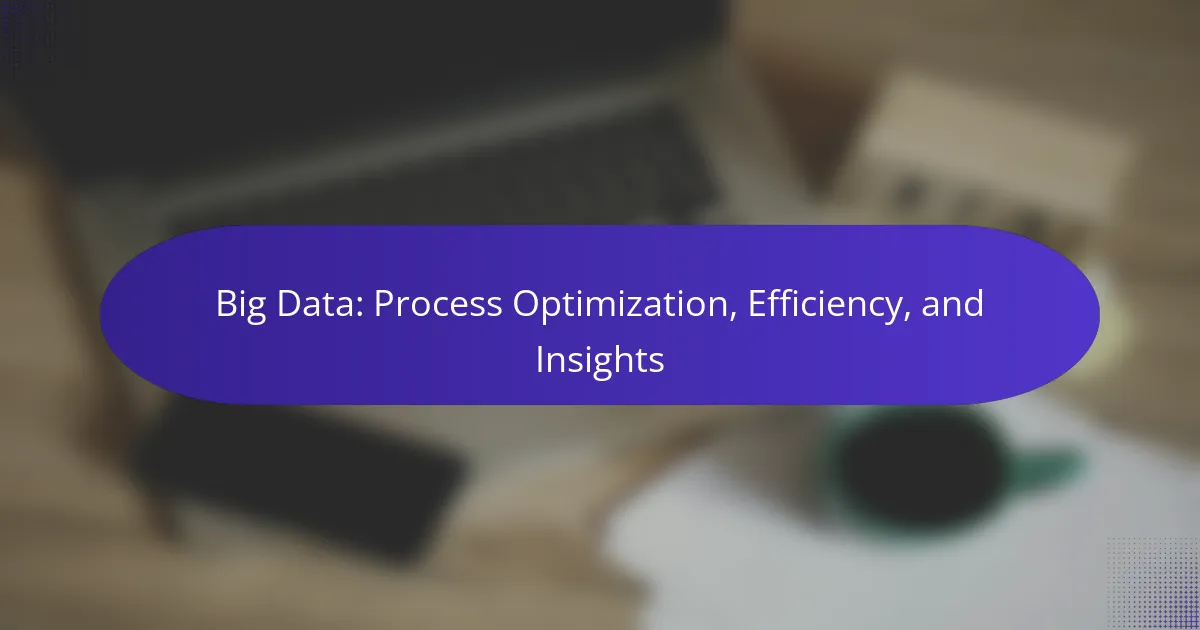Data visualization tools are essential for transforming complex data sets into clear, actionable insights, enabling effective communication of findings. By prioritizing user-friendly interfaces and powerful analytical capabilities, these tools enhance usability and collaboration, making data analysis more accessible. With features like interactive dashboards and customization options, they facilitate better decision-making and save valuable time.
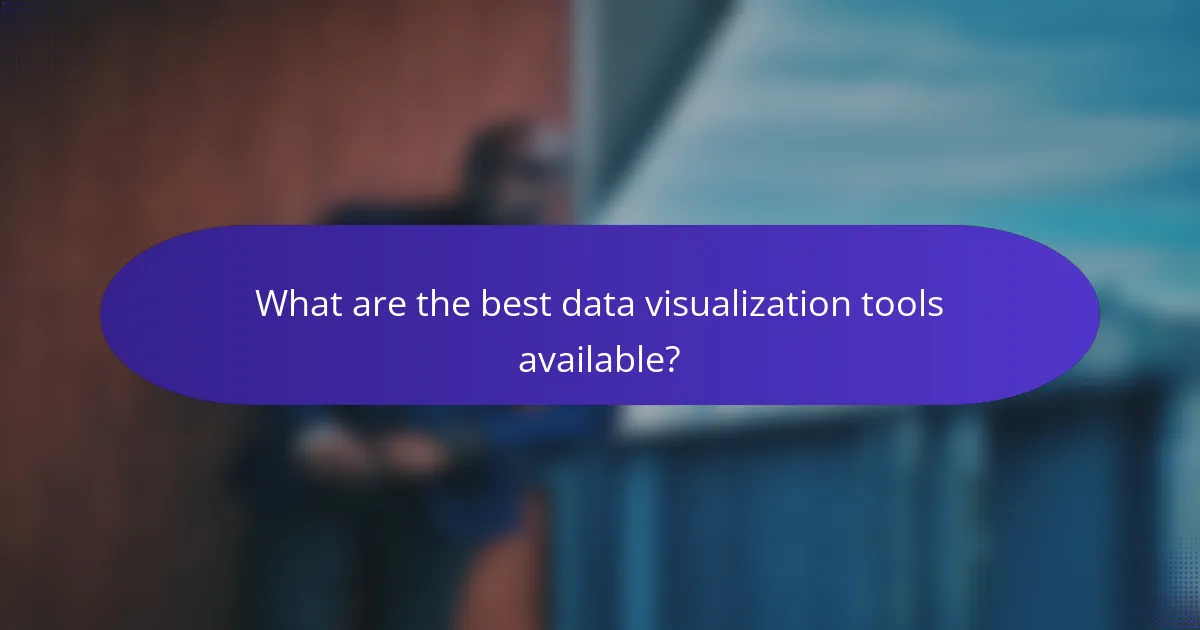
What are the best data visualization tools available?
The best data visualization tools combine user-friendly interfaces with powerful analytical capabilities. They help users transform complex data sets into clear, actionable insights, making it easier to communicate findings effectively.
Tableau
Tableau is renowned for its intuitive drag-and-drop interface, allowing users to create interactive and shareable dashboards. It supports a wide range of data sources, from spreadsheets to big data, making it versatile for various industries.
Key features include real-time data analysis and the ability to handle large volumes of data seamlessly. Users should consider Tableau’s licensing costs, which can be on the higher side, especially for larger teams.
Power BI
Power BI, developed by Microsoft, integrates well with other Microsoft products and offers robust data modeling capabilities. It provides users with a suite of tools for transforming raw data into informative visuals quickly.
With a lower entry cost compared to some competitors, Power BI is suitable for small to medium-sized businesses. However, users may encounter limitations in data capacity and advanced analytics compared to higher-end tools.
Qlik Sense
Qlik Sense stands out for its associative data model, enabling users to explore data freely without the constraints of predefined queries. This flexibility allows for deeper insights and discovery of hidden patterns.
It offers strong collaboration features and mobile accessibility, making it a good choice for teams. However, the learning curve can be steeper for new users, so training may be necessary to maximize its potential.
Google Data Studio
Google Data Studio is a free tool that allows users to create customizable reports and dashboards with ease. It integrates seamlessly with other Google services, such as Google Analytics and Google Sheets, making it ideal for users already within the Google ecosystem.
While it may lack some advanced features found in paid tools, its cost-effectiveness and ease of use make it a popular choice for small businesses and individual users. Users should be aware of data privacy considerations when using cloud-based services.
Looker
Looker is a powerful data exploration and business intelligence platform that allows users to create and share reports easily. It emphasizes data governance and provides a centralized platform for data analytics.
Looker is particularly beneficial for organizations with complex data environments, as it enables users to build custom metrics and dimensions. However, its pricing model may be a barrier for smaller organizations, as it typically requires a significant investment.

What features should I look for in data visualization tools?
When selecting data visualization tools, prioritize features that enhance usability, flexibility, and collaboration. Key aspects include interactive dashboards, data connectivity options, customization capabilities, and collaboration features, all of which contribute to effective data analysis and presentation.
Interactive dashboards
Interactive dashboards allow users to engage with data in real-time, making it easier to explore trends and insights. Look for tools that offer drag-and-drop functionality, enabling users to customize their views without needing extensive technical skills.
Consider features like filtering, zooming, and drill-down capabilities, which enhance user experience. For example, a sales dashboard might let users click on a region to see detailed performance metrics for that area.
Data connectivity options
Robust data connectivity options are essential for integrating various data sources, such as databases, spreadsheets, and cloud services. Ensure the tool supports popular formats and platforms, allowing seamless data import and export.
Tools that offer API access or built-in connectors can significantly streamline the process. For instance, a visualization tool that connects directly to Google Analytics can provide instant access to web traffic data.
Customization capabilities
Customization capabilities enable users to tailor visualizations to their specific needs and branding. Look for tools that allow adjustments in colors, fonts, and layouts to create a consistent look across reports.
Additionally, consider whether the tool supports custom visual types, such as heat maps or network diagrams, to better represent your data. This flexibility can enhance the clarity and impact of your presentations.
Collaboration features
Collaboration features facilitate teamwork by allowing multiple users to work on visualizations simultaneously. Look for tools that offer sharing options, comments, and version control to keep track of changes and feedback.
Real-time collaboration can significantly improve project efficiency. For example, a team can collectively analyze a dashboard and make adjustments based on group insights, leading to more informed decision-making.
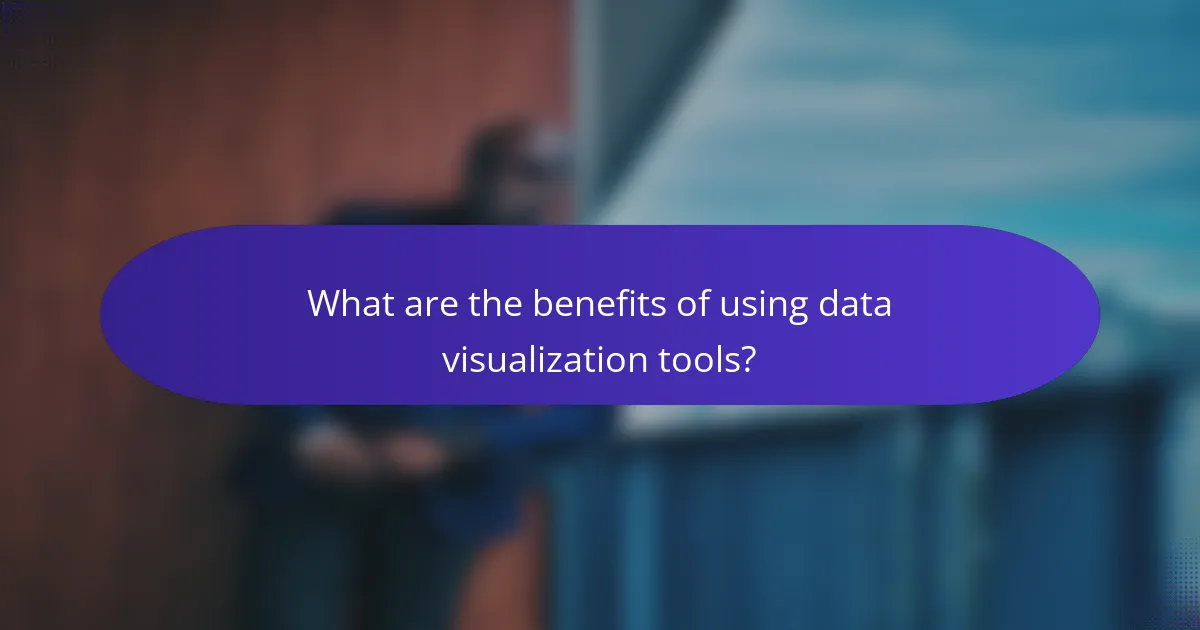
What are the benefits of using data visualization tools?
Data visualization tools offer significant advantages by transforming complex data into visual formats, making it easier to understand and analyze. These tools enhance clarity, facilitate better decision-making, and save time while engaging users effectively.
Enhanced data comprehension
Data visualization tools improve comprehension by presenting information visually, which helps users grasp trends and patterns quickly. Instead of sifting through spreadsheets filled with numbers, users can interpret data through charts, graphs, and maps, making insights more accessible.
For example, a line graph can show sales trends over time, allowing stakeholders to identify peak periods and potential downturns at a glance. This visual representation reduces cognitive load and aids in retaining information.
Improved decision-making
With clearer insights from data visualizations, decision-making becomes more informed and timely. Visual tools allow users to compare different datasets side by side, making it easier to evaluate options and outcomes.
For instance, a dashboard displaying key performance indicators (KPIs) can help managers quickly assess business health and make strategic adjustments. This proactive approach can lead to better resource allocation and increased operational efficiency.
Time-saving insights
Data visualization tools can significantly reduce the time needed to analyze data. By automating the process of data representation, users can focus on interpretation rather than data preparation.
For example, generating a report that would typically take hours can be done in minutes with the right visualization software. This efficiency allows teams to respond to market changes and internal challenges more swiftly.
Increased engagement
Visual data presentations tend to engage audiences more effectively than traditional reports. Engaging visuals capture attention and can stimulate discussions, making data-driven presentations more impactful.
Using interactive elements, such as clickable charts or real-time data feeds, can further enhance user engagement. This interactivity encourages stakeholders to explore data on their own, leading to deeper insights and a more collaborative decision-making process.
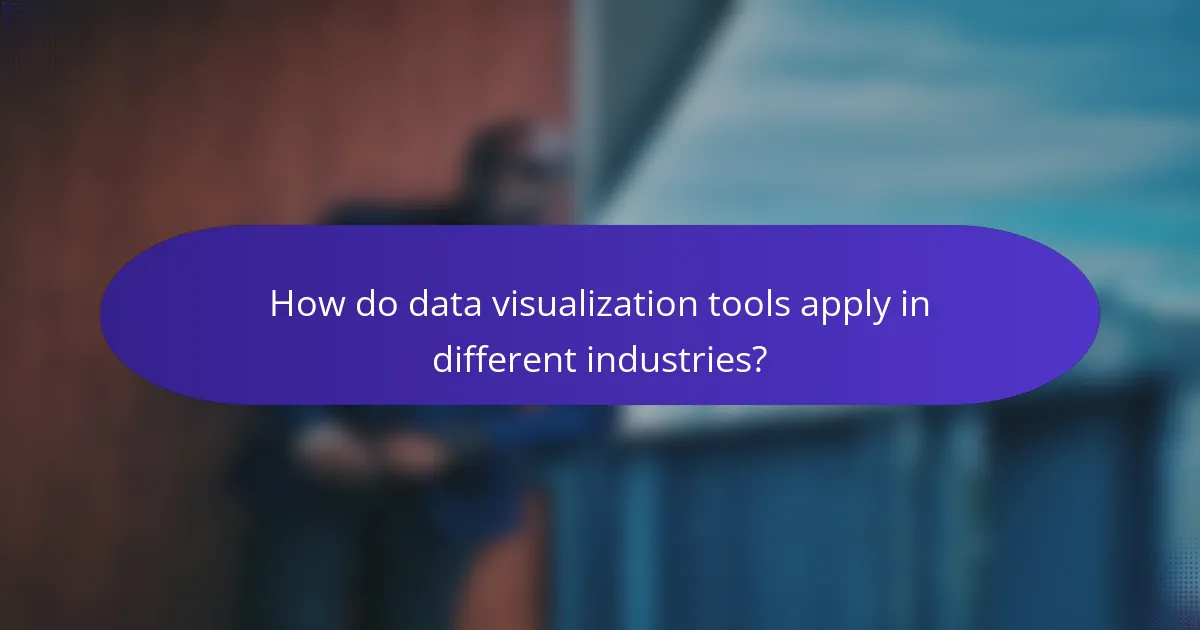
How do data visualization tools apply in different industries?
Data visualization tools are essential across various industries as they transform complex data into understandable visual formats, aiding decision-making and strategic planning. By leveraging these tools, organizations can uncover insights, track performance, and communicate findings effectively.
Healthcare analytics
In healthcare, data visualization tools help analyze patient data, treatment outcomes, and operational efficiency. For instance, hospitals can use dashboards to monitor patient flow and resource allocation, identifying bottlenecks in real-time.
Key metrics such as patient wait times and readmission rates can be visualized to enhance care quality. Tools like Tableau or Power BI enable healthcare professionals to create interactive reports that facilitate better communication among stakeholders.
Financial reporting
Financial reporting benefits significantly from data visualization, allowing companies to present financial data in a clear and concise manner. Visualizations such as charts and graphs can illustrate revenue trends, expense breakdowns, and cash flow forecasts, making it easier for stakeholders to grasp financial health.
Using tools like Microsoft Excel or QuickBooks, organizations can create visual reports that highlight key performance indicators (KPIs) and support strategic financial planning. Regularly updating these visualizations helps in maintaining transparency and accountability.
Marketing performance tracking
Marketing teams utilize data visualization tools to track campaign performance and customer engagement metrics. By visualizing data from various channels, such as social media and email marketing, teams can quickly assess which strategies are effective.
For example, tools like Google Data Studio can help marketers create dashboards that display conversion rates, click-through rates, and return on investment (ROI). This enables data-driven decisions to optimize marketing efforts and allocate budgets effectively.
Supply chain management
In supply chain management, data visualization tools provide insights into inventory levels, order fulfillment, and logistics performance. By visualizing supply chain data, companies can identify inefficiencies and streamline operations.
Tools like SAP Integrated Business Planning allow organizations to create visual representations of their supply chain processes, helping to forecast demand and manage stock levels. Regularly updating these visualizations can prevent stockouts and reduce excess inventory costs.
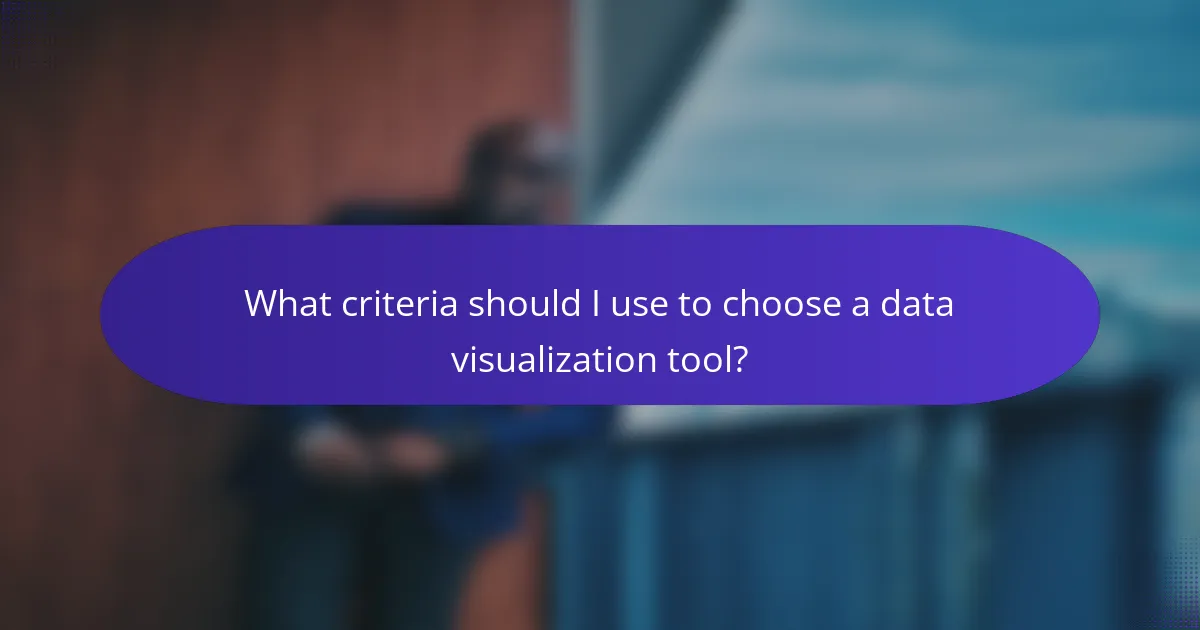
What criteria should I use to choose a data visualization tool?
When selecting a data visualization tool, consider factors such as ease of use, integration capabilities, and the specific features that meet your data analysis needs. Prioritize tools that align with your budget and the type of data you will be visualizing.
Budget considerations
Budget is a critical factor when choosing a data visualization tool, as prices can vary widely. Tools may range from free open-source options to premium subscriptions costing hundreds of dollars per month. Assess your budget to determine whether you need a basic tool or a more advanced solution with extensive features.
Consider not only the upfront costs but also any ongoing expenses, such as maintenance, training, and potential upgrades. Some tools offer tiered pricing based on the number of users or features, which can help you find a solution that fits your financial constraints.
To make an informed decision, create a comparison table listing the tools you’re considering along with their costs, features, and any additional expenses. This will help you visualize the trade-offs and select a tool that provides the best value for your investment.
